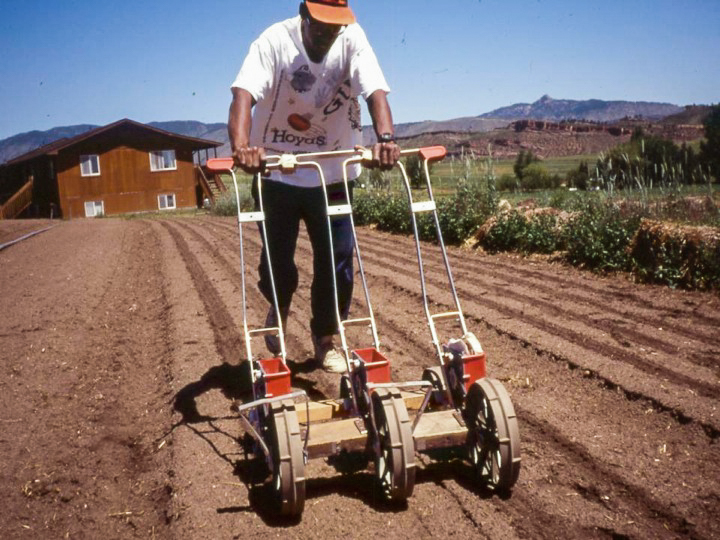
The flame weeder is run over the beds of slow-germinating crops such as beets, carrots, onions, parsnips, etc. just before the seedlings emerge from the ground. By using the flame weeder just before the plants come up, the fast germinating weeds are destroyed, and the carrots or other crops emerge into an essentially weed-free bed.
The best thermal weed control is achieved with a "stale bed". This means that the soil is prepared and the rows marked for planting approximately 2 weeks before the crop is planted, to let the weeds start to germinate. In dry climates water should be applied to promote weed germination. Floating row covers can be spread over the beds to further speed up the germination of the weeds if the beds have not been prepared far enough ahead of time.

Then without tilling the soil again you plant into the "stale bed". Plant either by hand or with a planter, trying to disturb the soil as little as possible. In this way, by the time the carrots are starting to germinate, the greatest number of weeds are already up to be killed by the flame weeder.
With some close observation one can find the right timing. A pane of glass placed over the row and sealed around the edges will create the greenhouse effect and cause the carrots in that part of the row to germinate more rapidly. When you see the carrots coming up under the glass you know that the rest of the row is about to emerge from the soil. When you think the crop is about to come up, it is good to dig several places in the row and inspect the sprouting seeds to be sure to get the right timing. We tend to plant the crops for flame weeding slightly deeper than usual, so that we have more leeway from germination to seedling emergence. First the seed starts putting down a root and then the seedling leaves start pulling out of the seed coat as the plant moves up toward the surface of the soil. This is the time to flame - just before emergence. It is better to flame a little too early than too late. With a little experience the right timing can be assessed quite easily.

Flame weeding can also be used for faster germinating crops, like spinach, radishes, salad mix, etc., if they are planted into an approximately three-week old stale bed. This way weeds are up before the crop is planted and can be flamed almost immediately if need be, as in the case of radishes and spinach.
Move the flame weeder down the row at a slow walk. It is not necessary to burn the weeds. The flame only needs to overheat the tissues and cook the protein of the plants. They will have a glassy look and wilt in a few hours. You can try different speeds and see what is effective for the size and type of weeds you have to deal with. Try to avoid using the flame weeder when the weeds are wet from rain or heavy dew, since the moisture will keep the flame from killing the weeds. Moisture on the plants requires a slower speed.
Click here for a Photo Tour of several flame weeded crops.
Click here for Growing for Market article on flame weeding: Fire Your Weeds!